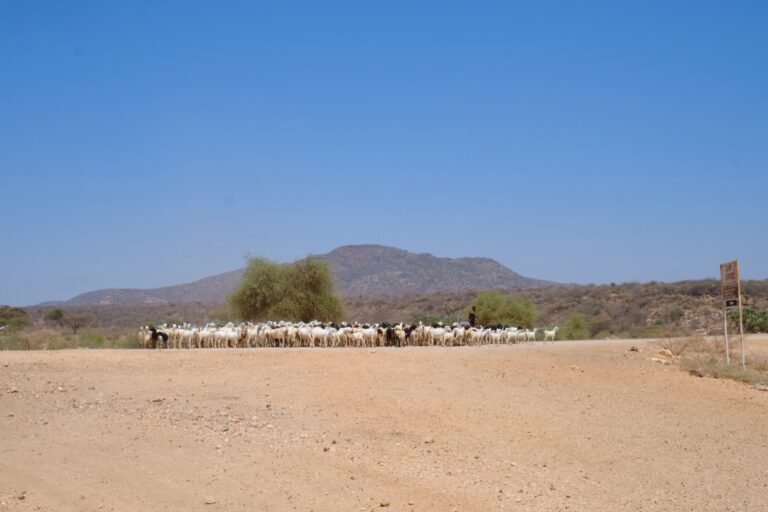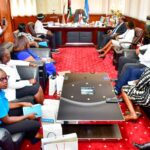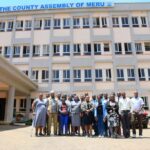Isiolo County, a sprawling frontier in Kenya’s Upper Eastern region, is home to 10 electoral wards across two constituencies. Covering 25,336.1 square kilometers with a population of over 268,002 (2019 Kenya Census), this semi-arid county blends pastoral traditions with emerging economic potential. For Kenyan business professionals, understanding these wards—from Isiolo North’s urban pulse to Isiolo South’s rural expanse—offers a roadmap to tap into a region poised for transformation.
Isiolo thrives on livestock, trade, and strategic infrastructure, with its headquarters in Isiolo Town anchoring a growing hub. This detailed guide lists all 10 wards, unpacks their economic drivers, and highlights opportunities for 2025. Written in a conversational tone for business minds, it’s packed with data and fresh insights on how Isiolo’s unique position can fuel your next venture. Let’s dive into these wards and see what’s on the horizon.
Isiolo County: A Gateway to Opportunity
Isiolo County straddles Kenya’s Upper Eastern region, bordered by Marsabit to the north, Wajir to the northeast, Garissa to the southeast, Tana River to the south, Meru to the southwest, Laikipia to the west, and Samburu to the northwest. Its two sub-counties—Isiolo North and Isiolo South—divide into 10 wards, each with an MCA shaping local priorities. With 75,355 registered voters (IEBC 2022), Isiolo’s consumer base, though small, is dynamic and expanding.
The county’s economy, valued at over KSh 15 billion annually (county estimates), hinges on pastoralism—over 1.5 million livestock—alongside small-scale trade and tourism tied to its three national reserves: Bisanadi, Buffalo Springs, and Shaba. Governor Guyo’s push for infrastructure, including the Isiolo International Airport and the upcoming export abattoir, positions Isiolo as a Vision 2030 flagship county. Here’s the full ward breakdown.
Full List of Wards in Isiolo County by Constituency
Isiolo’s 10 wards span two constituencies, each with unique economic vibes. Below, they’re laid out with a peek at what drives them.
Isiolo North Constituency
Population: ~180,000 (est.). The county’s urban and trade hub.
- Wabera Ward
- Profile: Urban, near Isiolo Town, trade and services.
- Business Angle: Retail or logistics hubs.
- Bulla Pesa Ward
- Profile: Peri-urban, pastoral and small markets.
- Business Angle: Livestock trade or consumer goods.
- Chari Ward
- Profile: Rural, pastoralist base near reserves.
- Business Angle: Eco-tourism or fodder production.
- Cherab Ward
- Profile: Remote, livestock-driven.
- Business Angle: Meat supply or mobile banking.
- Ngare Mara Ward
- Profile: Pastoral with trade growth.
- Business Angle: Solar solutions or farm inputs.
- Burat Ward
- Profile: Rural, farming and livestock.
- Business Angle: Agro-tech or veterinary services.
- Oldo/Nyiro Ward
- Profile: Remote, pastoral and trade.
- Business Angle: Renewable energy or microfinance.
Isiolo South Constituency
Population: ~88,000 (est.). A rural expanse with agro-pastoral promise.
- Garba Tulla Ward
- Profile: Trading center, pastoral base.
- Business Angle: Retail or livestock markets.
- Kina Ward
- Profile: Rural, farming and trade.
- Business Angle: Agro-processing or water systems.
- Sericho Ward
- Profile: Remote, pastoralist stronghold.
- Business Angle: Fodder farming or solar energy.
Economic Drivers of Isiolo’s Wards
Isiolo’s wards fuel a KSh 15 billion+ economy rooted in pastoralism but branching into new terrain. Livestock—1.5 million cattle, camels, sheep, and goats—generate KSh 8 billion yearly (county data). Small-scale farming, like maize and green grams, adds KSh 2 billion, thriving in wetter wards like Kina and Burat. Tourism, tied to Bisanadi, Buffalo Springs, and Shaba reserves, pulls in KSh 3 billion, with 20,000 visitors in 2023 (Kenya Tourism Board). Trade in urban wards like Wabera and Garba Tulla contributes KSh 2 billion.
Key highlights:
- Livestock: 80% of households own animals, per 2019 Census.
- Tourism: Up 5% yearly since 2020, driven by reserves.
- Population Density: 11 people per km², with Isiolo Town at 5,000+ residents.
Recent moves—like the Sh128 million climate resilience project (2024)—boost rural wards, while the Isiolo-Meru highway upgrade, completed in 2023, cuts travel to Nairobi (270 km) to four hours.
Business Opportunities Across Isiolo’s Wards
Isiolo’s 10 wards offer tailored prospects for 2025. Here’s where to jump in:
Livestock and Agro-Processing
- Target Wards: Cherab, Sericho, Bulla Pesa, Garba Tulla.
- Opportunities: Meat processing, fodder farming, or feedlots.
- Why: The export abattoir, set for 2025, needs supply chains—livestock exceeds local processing by 20%.
Tourism and Hospitality
- Target Wards: Chari, Ngare Mara, Oldo/Nyiro.
- Opportunities: Safari camps, cultural tours, or lodges.
- Why: 20,000 visitors hit reserves in 2023—rural wards remain untapped.
Retail and Consumer Markets
- Target Wards: Wabera, Garba Tulla, Kina.
- Opportunities: FMCG outlets, tech shops, or trade hubs.
- Why: Urbanizing wards see 6% consumer growth yearly.
Renewable Energy and Infrastructure
- Target Wards: Burat, Sericho, Oldo/Nyiro, Ngare Mara.
- Opportunities: Solar grids or water harvesting.
- Why: Only 8% of homes use electricity (2019 Census)—off-grid demand soars.
Challenges Facing Isiolo’s Wards
Isiolo’s wards face hurdles that savvy businesses can turn into wins:
- Infrastructure: 10% of roads are paved—rural wards like Sericho lag in trade.
- Water Scarcity: 70% rely on Ewaso Nyiro River—drought cuts yields 25% yearly.
- Market Links: Remote wards like Cherab lose 15% of livestock to poor access.
These gaps spell niches—think logistics firms, water tech, or mobile markets. In 2023, 35% used improved water sources, with Wabera at 75%—a stark urban-rural divide to bridge.





